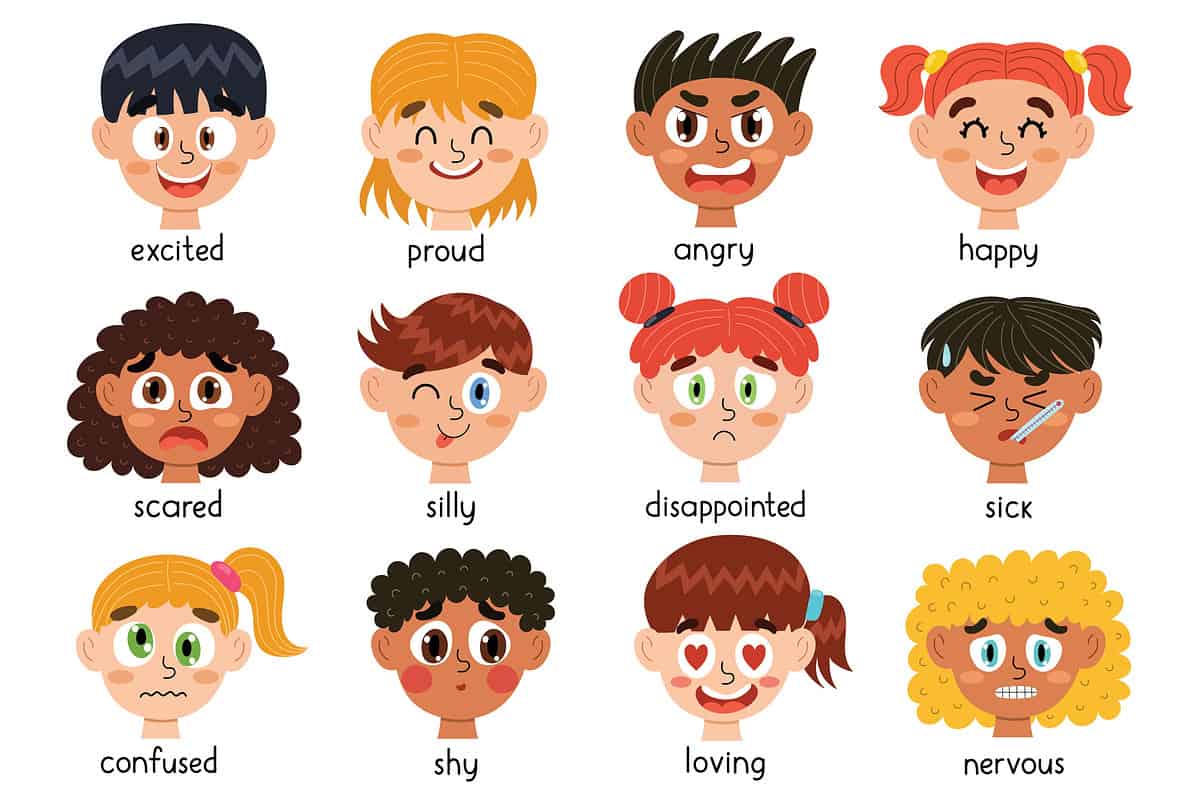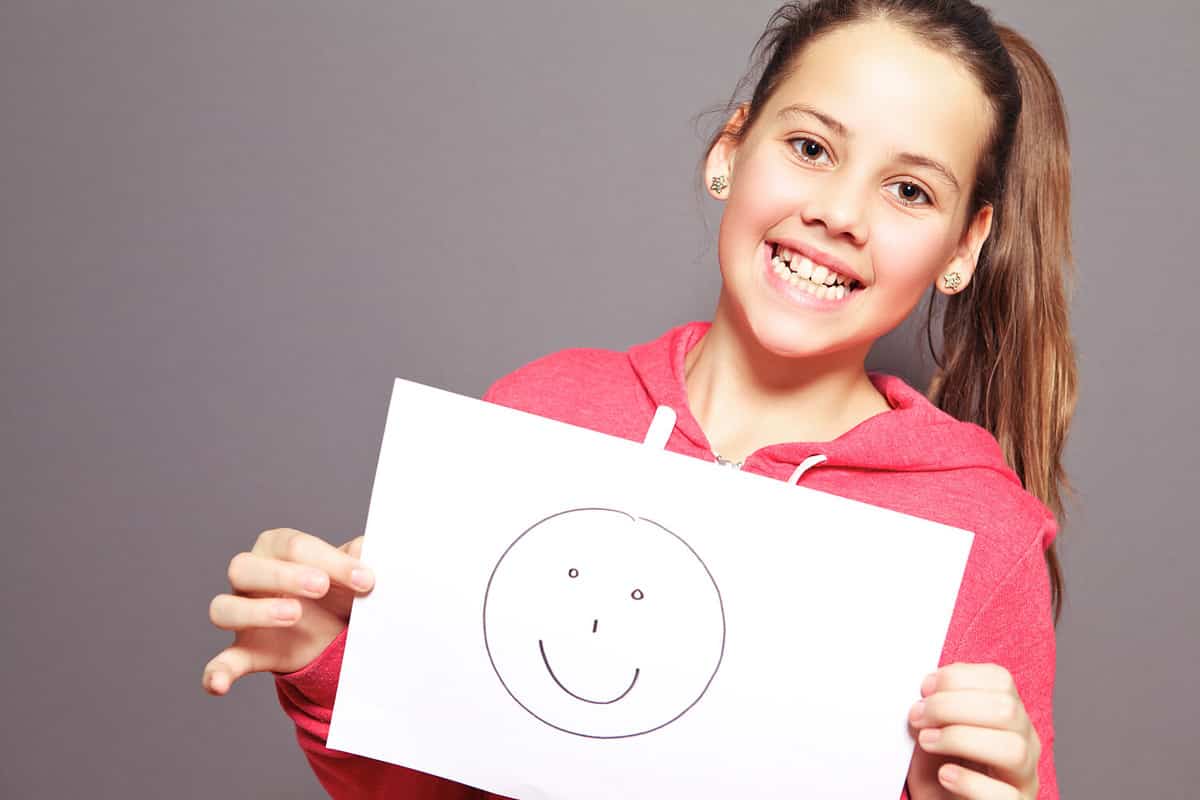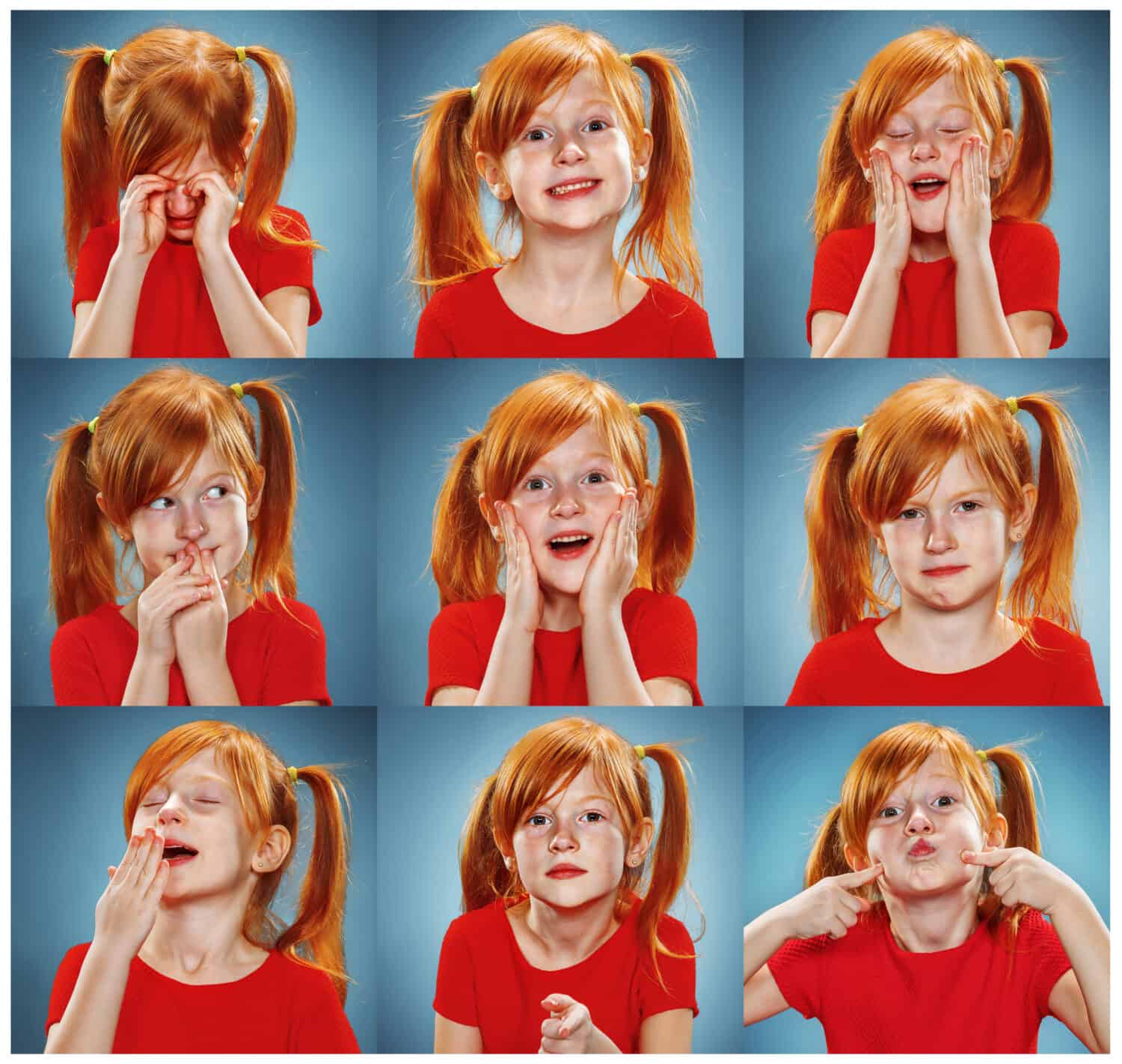Children struggle with handling their emotions, they get overwhelmed, and their inability to self-regulate leads to explosive meltdowns. When children understand and can verbalize their feelings, they are better able to learn how to manage their emotions. Luckily for parents, at some point, temper tantrums, crying fits, and colossal meltdowns will come to an end.
Label Emotions and Feelings

Children can identify their emotions to build empathy towards themselves and others.
©jsabirova/Shutterstock.com
As children grow, they learn to label their emotions and be given the language to identify and process their big feelings. Using a feelings chart can help them with the words to describe feelings and emotions. But that cognitive change doesn't happen alone; parents, teachers, and other safe adults are an important part of the process. In addition to modeling self-regulation, adults can guide children through the learning process as they become more self-aware.
Educators are beginning to understand the importance of emotional intelligence in children. In children, emotional intelligence is intertwined with emotional identification, which is the ability to identify and express emotions in a positive manner. And children learn to recognize and empathize with the emotions and feelings of others. Self-awareness and empathy are the fundamental tenants of teaching children how to be emotionally intelligent.
According to The American Psychological Association, managing negative feelings and emotions is different for every child and is based on the child’s natural temperament, home life, and the environment they grow up in. In addition, other variables like being physically or mentally tired or hungry have an effect on their emotions too. The adults in a child’s life are facilitators in helping children learn to manage their feelings.
Benefits of Self-Regulation
A child that is able to self-regulate their emotions is going to feel better about themselves and have higher self-esteem. They will struggle less than their peers in making connections in the classroom and on the playground. Learning about emotions and feelings keeps kids grounded. They are able to negotiate conflict, handle embarrassment, navigate frustrations, manage disappointments, control impulses, and calm down when needed.
In addition to reducing temper tantrums and outbursts, research suggests that children who are able to self-regulate are rewarded with academic success starting as early as kindergarten.
How to Teach Children to Self-Regulate

Children excel when they understand their emotions.
©Ground Picture/Shutterstock.com
Parents can teach their children these skills in connection to the work their teachers do in the classroom. Here are strategies for parents to help their children understand their emotions and the emotions of others for positive relationships at home and at school.
Four Practical Ways to Teach Self-Regulation
Talk to children about their emotions and use books or shows that help your child connect to their feelings. Point to characters in books or shows and ask your child why this character seems sad, happy, or excited. Talk about good feelings and bad feelings and how to feel better. When children see that everybody has good and bad emotions, they feel safer expressing themselves.
Form a connection or special bond with your child by giving them your attention. Spend time together, do activities together, discuss family relationships, and, most importantly, share feelings. Help them feel empathy and explain how actions affect others. Explain that the words we use can hurt and that name-calling is just as hurtful as hitting.
Parents need to remember that their children are always watching. Children will act out what they see at home. So model how to manage feelings and work through challenging moments. Tell your child that you are taking a break to sit quietly because you feel overwhelmed. Show them that when they feel sad, that reading a book or going for a walk helps them feel better. They will understand that certain activities can help them feel better too.
Children love to act out scenarios and role-play. When you are playing with your child, role play using stuffed animals or dolls, how they are feeling. For example, this doll is sad because her friends are playing without her. How can she feel better? She could ask her friends if she can play too. Role-playing about feelings in pretend play is where children can see these concepts in action.
Positive Reinforcement and Self Regulation
Parents must call out good behavior, not just bad behavior. When parents praise their children, they feel a sense of pride. Negative talk and punishments do little to ward off negative behavior. In many cases, they just perpetuate it. When you see your child being kind, helping, or showing positive behavior, always comment and let them know you care.
When your child has big emotions, let them feel their feelings in a safe space. After the big emotions have passed, you can discuss and identify those feelings. You can help them understand where their feelings came from and how to problem-solve if the situation comes up again.
Self-regulation and managing emotions take time; children will have their ups and downs and learn as they grow. As their world widens and they spend more time with classmates, teammates, family, and friends, they will encounter new situations and more complex emotions. From elementary school through high school and even as young adults off to college, parents can help their children manage emotions and learn life skills to self-regulate for positive personal and professional relationships.
The image featured at the top of this post is ©True Touch Lifestyle/Shutterstock.com
